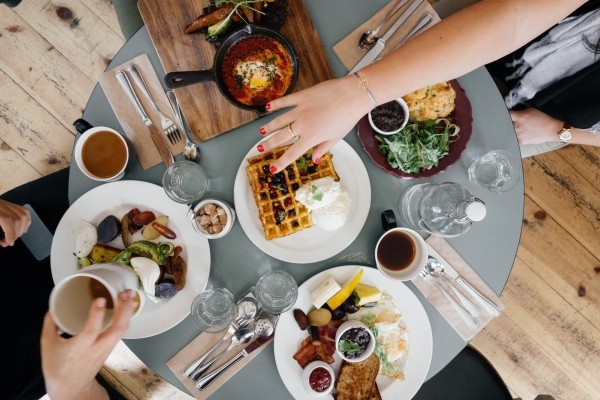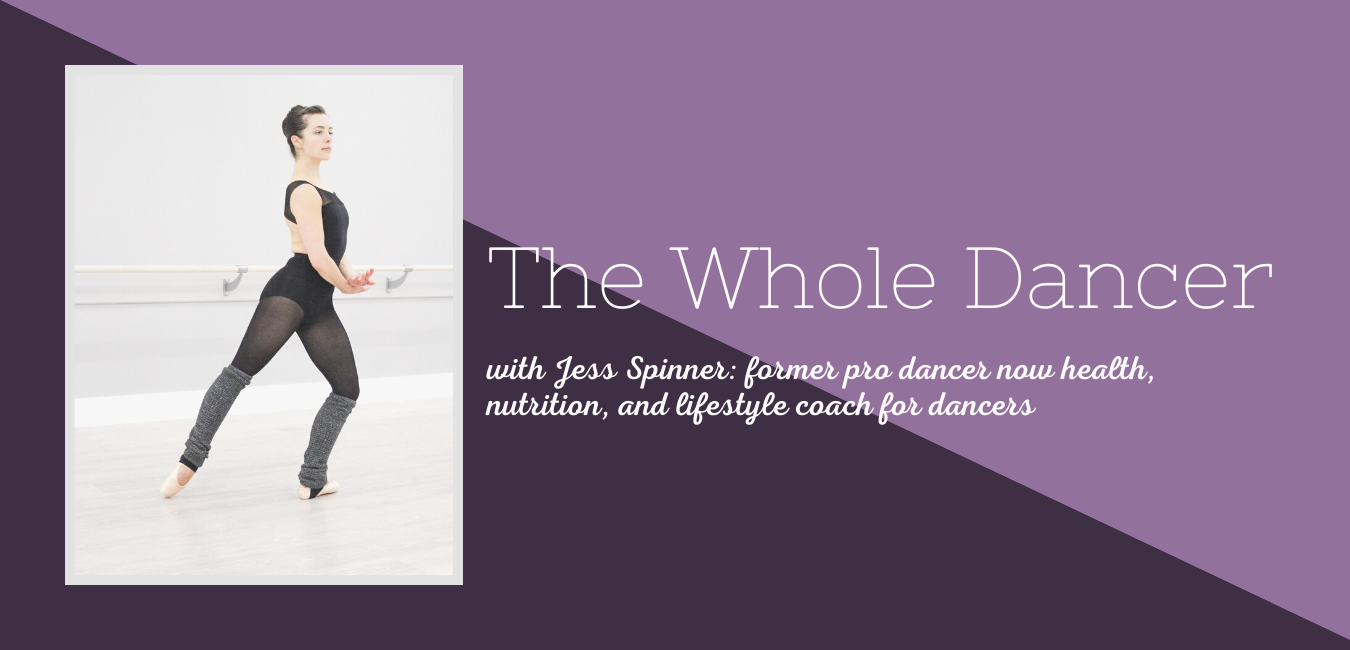Dancers need to eat for energy. This means finding the foods that will maximize your performance in class and rehearsals. At a recent eating for energy webinar, we weren’t able to answer all of your questions so here are the responses!
How can I maintain my weight once I’ve gotten to my goal?
This has to do with utilizing a realistic and sustainable plan during the weight loss phase. If you are severely restricting calories or depriving yourself of food groups or certain foods, the maintenance phase is going to be impossible! As we discussed in the webinar, by sticking to whole foods, prioritizing protein and making sure your nurturing your “primary foods” (career, spirituality, physical activity, relationships) maintaining your ideal dancer’s body will be easy.

For teachers: How do we teach young students from the beginning to eat, not stop eating and teach them that eating well is key?
I think having amazing examples like Shelby who are dancing professionally, eating and loving food is an important part of teaching students the importance of eating well. Imparting on them the knowledge that as dancers, strength is extremely important and healthy fats and quality protein sources are what will help them achieve and maintain that strength.
Being a ‘weak’ dancer is not desirable so making sure they see the connection between food and strength and energy is extremely important. I think teachers have a huge responsibility to recognize how much young dancers internalize everything they hear from teachers. Comments regarding weight and food should be closely moderated.
Are carbs useful in a dancers diet?
Yes, yes, yes! Complex, minimally processed carbs are an integral part of a healthy diet for dancers. These are the foods that will give you slow burning energy and keep you going throughout a long day of dancing.
Remember, vegetables are carbs! In general, carbohydrates are great pre class or performance fuel.
How much protein does a dancer need to maintain muscle but keep the muscle lean?
The answer to this question is very individual. The recommendation I come across most often is a minimum of 46g for women. However, we all metabolize macronutrients differently. For some, more protein will be better and for others less. If weight loss is a challenge, it’s likely you’re not getting enough protein.
What foods help with injury recovery best?
A big focus should be on foods that improve bone density and anti-inflammatory foods. Some of the super foods we discussed like Maca Powder or anti-inflammatory Turmeric are great places to start. Minimal amounts of high-quality dairy should be consumed and lots of variety in leafy greens.
What foods or habits cause bloating and stomach discomfort, how do you avoid this?
Allergenic foods like eggs, tofu, gluten, corn, wheat, soy or dairy could be the cause of bloating and stomach discomfort. This is often the reaction with a mild allergy. Try a guided elimination diet to determine which of the foods might be the cause and then you can eliminate the culprit from your diet. Dehydration can also be the cause of bloating. Drinking more water can help release the bloating and discomfort.
Is it better to have three bigger meals (without much snacking in between) or many smaller snacks?
The answer to this is going to depend on what your day looks like and what feels best for you. When you eat three large meals, your body may feel very deprived in between and hold onto whatever fat stores you have. On the other hand, more frequent eating can lead to overall excessive caloric intake.
Make your meals as nutrient dense as possible. Listen to your body! There will be times when you are hungry for a full meal and that is what you need to feel satisfied. Other times, all you need is a small snack for satiety.

What kind of lunch can I bring to the studio that will leave me feeling full and satisfied, but not too full to dance 20-minutes later?
I loved Shelby’s suggestion of a quinoa salad of sorts. Quinoa is a very light, yet complete protein. I never feel overly stuffed after eating a quinoa salad but it is supremely satisfying. I would also suggest some kind of a lentil salad. Lots of options there! You could do a green salad with avocado, flax seeds, hemp seeds or cashews (healthy fats) and a couple of hard boiled eggs, chicken or fish (protein) and some cubed sweet potato (sweet, energetic carbs). Sandwiches are not bad but I would focus on a sprouted grain bread, lean protein, healthy fat and make sure you incorporate some greens as well.
Thoughts on high protein, low carb?
An excess of protein is no good for the body, the processing can be very taxing on the kidneys. Too much can lead to dehydration and leach important minerals from bones. Healthy carbohydrates are great! Within reason, a higher protein, somewhat lower carb diet may work for you.
In general, most americans are consuming much greater amounts of protein than they need (because of too much meat and dairy). The challenge for proper protein consumption is greater for vegetarians and vegans but it just takes some more planning.
Here is a question I’ll use in closing:
How to eat to maintain the right body aesthetic?
Clearly, as dancers, the physical form is extremely important. We put that pressure on ourselves and we hear about it from teachers, peers and artistic directors. Bottom line: you can only reach your personal best. You will never achieve Shelby Elsbree’s body because you are not Shelby.
It’s kind of a bummer to realize there’s really no one-size fits all solution here. No magic pill to achieve the perfect body. Try to take some joy in the experimentation with food. As Shelby said, we are very lucky to have so much amazing food at our fingertips. Appreciate that luxury and have a lovely journey towards achieving your personal best dancer’s body.
Experiment healthfully with adding new high quality foods to your diet. Deprivation is not the answer. Find the moderation with sweets and caffeine that works for you. Eat plenty of plants and sit and enjoy your meals. Be present with your food and the people around you and enjoy this beautiful life as a dancer and artist.
I’d love to hear what your biggest takeaways from the webinar or Q + A were! Leave a comment and let me know!
